Ahobilam - Lord Narasimha's Sacred Abode
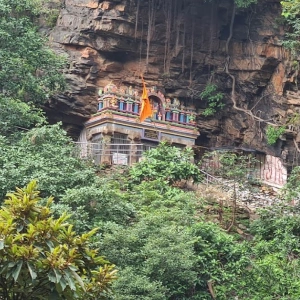
Ahobilam, a sacred site in the Kurnool district of Andhra Pradesh, resonates with the divine aura of Lord Mahavishnu's Narasimha incarnation. It is renowned for the episode where Lord Narasimha emerged from a pillar in Hiranyakasipu's palace to vanquish the demon and protect Prahlada. The remnants of the pillar, the palace, the sacred ground of the confrontation, a celestial pond, and Prahlada's school still grace Ahobilam. The site also holds significance for Lord Caitanya Mahaprabhu's visit and Lord Ramacandra's tribute in the form of 'Narasimha Panchamritam' composed of five verses. Located 256 kilometers from Tirupati, Ahobilam is nestled in the Eastern Ghats range.
Ahobilam - The Majestic Power
Ahobilam, meaning 'What great strength!' is the awe-inspiring abode of Lord Nrisimha, the formidable half-lion, half-man incarnation. The divine event of Nrisimha emerging from a pillar is recounted in the 7th canto of Srimad-Bhagavatam and the Sthala Purana. Responding to Prahlada's plea, Lord Narasimha chose Ahobilam as His abode, at the peak called 'Garudachala.' The sanctity of this place, marked by the defeat of demon Hiranyakasipu, saw River Mandakini purifying the surroundings, earning the name 'Bhavanashini'.
Goddess Lakshmi appeared, creating the Laxmivan forest grove, and sages' hymns formed the sacred 'Vedadri' mountain. The name Ahobilam originates from the cave ('bila') where Lord Narasimha's divine play unfolded, with Garuda's penance leading to the Lord's revelation.
Ahobilam's mountains in the Nallamalai range of the Eastern Ghats are considered the manifestation of Sri Adi Sesha, connecting to legends in Kurma Purana, Padma Purana, and Vishnu Purana. Over time, Ahobilam has drawn devotion from figures like Sripad Ramanujacarya, Vedanta Desika, and Adi Sankaracharya, whose compositions echo in the sacred precincts.
Known by various names like Nava Narasimha Kshetra, Singavel Kundram, Pancha Krosa Kshetra, Garudachala, and Vedachala, Ahobilam stands as a testament to divine strength, purity, and the enduring legacy of devotion.
The Nava Narasimha Temples
The Nava Narasimha Temples in Ahobilam, divided into Lower and Upper Ahobilam, offer a unique devotional experience in the enchanting forests of the Eastern Ghats. These nine temples house self-manifested Deities of Lord Narasimha, each portraying distinct forms and moods.
The Lower Ahobilam temples are dedicated to Sri Bhargava Narasimha, Sri Yogananda Narasimha, Sri Chatravata Narasimha, Sri Karanja Narasimha, and Pavana Narasimha.
In Upper Ahobilam, the temples are - Sri Jwala Narasimha, Sri Ahobila Narasimha, Sri Malola Narasimha, Sri Krodha (Varaha) Narasimha.
Dvine places like Ugra Stambha, and Prahlada Mettu set amidst nature's splendor, invite worshippers to immerse in the sacred aura and witness diverse manifestations of Lord Narasimha, offering an unparalleled devotional journey.
1. Sri Jwala Narasimha Temple
Situated on 'Achalachaya Meru' hill below Ugra Stambha, Sri Jwala Narasimha Swamy Temple epitomizes the culmination of Lord Narasimha's fierce anger as He annihilated Hiranyakasipu. The temple, located around 4 kilometers from Upper Ahobilam, stands as a testament to the divine fury of the Lord.
Rakta Kunda Tirtha
In front of the temple lies the sacred pond, 'Rakta Kunda Tirtha,' a peaceful oasis with an open cave. After defeating the demon, Lord Narasimha cleansed His blood-stained hands here, turning the pond water vivid red. Despite its crimson appearance, the water remains crystal clear and sweet, offering devotees a profound devotional experience.
Ashtabuja Narasimha
Inside the sanctum, the main Deity, Ashtabuja Narasimha, displays eight powerful hands, dynamically tearing open the demon's abdomen. The first pair renders Hiranyakasipu motionless, the second disarms him, the third tears his entrails, and the fourth carries sankha and chakra.
Chaturbhuja Narasimha
Another manifestation, Chaturbhuja Narasimha, emerges from a pillar in a Stambhodbhava-murti form. With four hands, the Deity holds chakra and sankha in the upper pair and symbolically tears the demon with the lower hands. Goddess Lakshmi and Prahlada complete the divine tableau.
Narasimha chasing Hiranyakasipu
The third Deity depicts Lord Narasimha advancing towards Hiranyakasipu, who defiantly lifts his sword. The Lord firmly holds the demon, ready to overpower him, with His right hand poised to strike.
In the temple, every aspect vividly portrays the divine fury and victory of Lord Narasimha, providing devotees with an awe-inspiring and inspiring devotional journey.
2. Sri Ahobila Narasimha Temple
Situated 8 kilometers from Lower Ahobilam on Upper Ahobilam, the Sri Ahobila Narasimha Temple stands as the primary shrine among Ahobilam's nine sacred abodes. The temple venerates Lord Narasimha in His formidable form as Ugra Narasimha, addressed as Ahobila Nrisimha Swamy.
Within a cave, the Lord's awe-inspiring aspect is revealed as He tears apart the demon Hiranyakasipu's chest. Prahlada stands in reverence, and Goddess Chenchu Lakshmi sits in padmasana.
The devotional journey extends beyond the physical realm as, after defeating Hiranyakasipu, Lord Narasimha adorns Himself with a garland crafted from the demon's intestines. He uproots Hiranyakashipu's heart and effortlessly thwarts faithful soldiers' attacks with a mere touch of His nails.
The Sri Ahobila Narasimha Temple invites devotees to immerse themselves in the radiant presence of Ugra Narasimha, offering a profound experience of reverence, awe, and inspiration. Each facet narrates the divine saga, inviting believers into the sacred embrace of Lord Narasimha's grace and valor.
3. Sri Malola Narasimha Temple
Situated 2 kilometers from Upper Ahobilam's main temple, the Sri Malola Narasimha Temple offers a divine spectacle, elevating the devotional experience. Lord Narasimha graces this sacred abode in His peaceful form, known as Malola Narasimha.
Perched on Vedadri Mountain's peak, the temple exudes tranquility. Lord Narasimha, seated in Sukhasana posture, is accompanied by Chenchu Lakshmi. The divine tableau showcases the Lord cradling chakra and sankha in His upper hands, the lower right hand in abhaya pose, and the lower left hand embracing His consort.
The temple's sanctity extends beyond its boundaries, as seen in the divine intervention narrated through the founding pontiff, Sri Sathakopa Jeeyar. Meditating on the Lord's choice, the utsava murti of Sri Malola Narasimha flew into his hands, adorned with Paduka, signifying the Lord's readiness for a divine journey.
Adjacent to the temple, 1 kilometer away, stands Prahlada-mettu, the legendary school of Prahlada Maharaja. A small cave temple dedicated to Lord Narasimha enhances the spiritual aura of this sacred mountain.
The captivating episode of Prahlada approaching the enraged Lord Narasimha unfolds. After Hiranyakasipu's demise, Lord Narasimha remained angry. Saints and Gods failed to pacify Him until Prahlada, urged by Lord Brahma, humbly approached. In His ecstasy, the Lord blessed Prahlada, instructing him to rule his father's kingdom.
The Sri Malola Narasimha Temple encapsulates a celestial narrative, inviting devotees into a realm of reverence, awe, and profound inspiration. The divine saga unfolds within the walls of this sacred abode, offering a timeless connection with the Supreme.
4. Sri Krodha (Varaha) Narasimha Temple
Situated 1 km from the main Ahobila Narasimha Swamy temple on the Upper Ahobilam, the Sri Krodha (Varaha) Narasimha temple showcases a unique manifestation of the divine, hailed by devotees as Varaha Narasimha. This sacred site holds the tale of Lord Narasimha's discontent with Lord Brahma after slaying Hiranyakasipu.
When the Vedas slipped from Brahma's hands, Bhumi personified safeguarded them in Pathala. Responding to the Devas' plea, Lord Narasimha transformed into Krodha, reclaiming the Vedas from Patala. The Lord manifested as Sri Krodha Narasimha in this sacred spot, pacifying His anger over time.
You can explore the temple to encounter Sri Kroda Narasimha and the tender depiction of Sri Lakshmi Narasimha. The narrative reveals the Lord's affection for Chenchu Lakshmi.
Embark on a spiritual journey along the Bhavanasini river, leading to the cave shrine of Krodha (Varaha). The site, where Sripada Ramanujacarya delivered discourses, stands as a testament to the elevated sense of reverence and inspiration. It's a convergence of spiritual and natural elements, inviting devotees to experience the divine magnificence.
5. Sri Karanja Narasimha Temple
Sri Karanja Narasimha Temple is a sacred site under the Karanja Tree. Also known as Honge Mara locally, Lord Narasimha sits in meditation, holding a Chakra and Saranga bow. Bhavanasini river flows nearby.
In a captivating incident, Hanuman, engrossed in chanting Lord Rama's name, encountered Lord Narasimha, who revealed Himself as Rama, leading Hanuman to worship Him as Sri Karanja Narasimha. The temple includes a shrine dedicated to Hanuman.
Sage Gobila, cursed by Durvasa Muni, regained wisdom through devotion and the Narasimha Mantra. The Lord blessed him, and seekers of knowledge visit the temple to experience spiritual elevation and inspiration.
6. Sri Bhargava Narasimha Temple
Sri Bhargava Narasimha Temple, 2 km from Lower Ahobilam, sits atop a hill by the sacred 'Bhargava Tirtham' pond. Named after Bhargava Rama's penance, it honors Lord Bhargava Narasimha Swamy, a fierce form of Lord Narasimha.
Parasurama's penance sought the Lord's darshan at Hiranyakasipu's defeat, leading to the Lord's manifestation as Sri Bhargava Narasimha Swamy. The temple, amidst a dense forest, stands on Akshaya Tirtha, akin to Pushkara Tirtha.
Lord Narasimha is depicted with four hands, upper hands holding the chakra and sankha, lower hands tearing Hiranyakasipu's intestine. Prahlada stands to the right in the Sthanaka posture with Anjali hasta.
Accessible via local jeep or autos, the temple resonates with Sage Vasishtha's penance, and Prahlada's divine presence at the Lord's feet. Experience the profound spiritual energy of Sri Bhargava Narasimha, connecting devotees to a sacred sense of reverence and awe.
7. Sri Yogananda Narasimha Temple
Sri Yogananda Narasimha Temple is 2 km southeast of Lower Ahobilam. Legend says Lord Narasimha, after defeating Hiranyakasipu, taught yogic postures to Prahlada, giving the deity the name Yogananda Narasimha.
Seated on a high Garuda pedestal, Lord Narasimha is depicted in a yogic posture, holding a chakra and sankha. Legend also tells of Lord Brahma finding peace through devotion to Lord Narasimha at this temple. Initially worshiped in a deep tunnel, the deity was brought out for easier worship and installation.
Accessible by a well-connected road, the plain stone structure features a square Garbhagriha and Ardha mandapa, offering a serene space for devotees to experience profound reverence and inspiration.
8. Sri Chatravata Narasimha Temple
Sri Chatravata Narasimha Temple is 3 km from Lower Ahobilam on the way to Yogananda Narasimha Temple. The unique Lord Narasimha, known for His captivating smile, is worshiped under a peepal tree surrounded by thorny bushes, earning the name Chatravata Narasimha Swamy.
In a divine episode, Gandharvas Haha and Hoohoo pleased the Lord with their singing, gaining a blessing of fame as great singers. Devotees continue this tradition, singing melodiously to please the deity. Indra and Devas sought blessings here for the vanquishing of a demon-king, making it Devata aradhana kshetra.
Seated in padmasana pose on a low padmapitha, Sri Chatravata Narasimha holds a chakra and sankha in the upper hands, while the lower right hand is in the abhaya posture, and the lower left hand rests on the waist and left thigh in Katihasta. The Lord's captivating smile invites devotees into an atmosphere of reverence and inspiration.
9. Sri Pavana Narasimha Temple
Experience peace at Sri Pavana Narasimha Temple, situated by the river Pavana, 3 km from Lower Ahobilam on the way to Yogananda Narasimha Temple. Also called Pamuleti Narasimha Swamy, this temple embodies the most tranquil form of Lord Narasimha among the nine temples.
This sacred site is deep within the forest. Devotees can reach it by walking southwards from Upper Ahobilam or using local jeeps. The temple, a small rectangular structure with a Garuda stambha, reflects past prosperity and regular functions.
To visit, devotees can hire a four-wheel jeep from Lower Ahobilam, taking a 2-3 hour journey. Nearby, Chenchus reside, singing in their language about the union of the Chenchu bride with Narasimha.
The main deity, Lakshmi Narasimha, sits on Adi Sesha with a seven-hooded snake overhead. Lakshmi, embraced by the Lord, holds a Sankha and chakra in the upper hands, while the lower right hand is in the abhaya pose.
Access involves climbing 250 steep steps, walking 4 km on plain ground, or a rough 2-hour jeep drive from Lower Ahobilam. Seek peace, awe, and inspiration in this divine abode.
Other divine places
Sri Prahlada Varada Temple
Explore the sacred Sri Prahlada Varada Narasimha Temple in Lower Ahobilam, where Lord Nrsimhadeva bestows grace upon Prahlada Maharaja. The presiding deity, Sri Laxmi Narasimha Swamy, is accompanied by smaller shrines for Lakshmi, Andal, and Azhwars.
The temple altar features Utsava deities of Prahlada Varada, Pavana Narasimha, and the ten-handed Jwala Narasimha, flanked by Sreedevi, Bhoodevi, and the first Jeeyar, Sri Adivan Satakopa Swami. A shrine dedicated to Sri Venkateswara, southwest of the Narasimha temple, illustrates Lord Venkateswara seeking Narasimha's blessings before marrying Padmavathi. The Mukha Mandapa, now the Kalyana Mandapa of Narasimha Swamy, is part of this temple.
Surrounded by three prakaras, the temple showcases Vijayanagar style and depicts Lord Nrsimhadeva's pastimes on pillars. The combined efforts of the 44th Jeeyar of Sri Ahobila Matha and the Endowments Department of A.P. Government have renovated the temple. Experience the annual uthsava (Brahmothsavam) in February, where devotees embark on a spiritual journey of reverence, awe, and inspiration.
Ugra Stambha
Ugra Stambha, the awe-inspiring pillar, holds a pivotal role in the divine narrative of Lord Narasimha. It marks the very pillar from which the Supreme Lord emerged, a majestic response to the furious strike unleashed by the defiant Hiranyakasipu.
At the summit of Ugra Stambha, a sacred impression of the lotus feet of Sri Caitanya Mahaprabhu graces the divine structure, accompanied by a fluttering flag that adds to the spiritual ambiance.
Prahlada Mettu
Prahlada Mettu, the sacred school where Prahlada received teachings,is located behind the Malola Narasimha Temple in Upper Ahobilam. To reach it, take a 0.4 km walk through the forest and a narrow cliff path. This cave holds deep significance, serving as Prahlada's place of learning under teachers Sanda and Amarka. When demons threw Prahlada off the cliff, he descended through a cavern held by Lord Sri Krishna. Prahlada Maharaja inscribed 'om namo bhagavate vasudevaya' on the cave rocks, visible to devotees. Inside, experience the divine presence of Sri Yoga Narasimha, Sri Sudarshana, and Sri Narayana deities, creating an atmosphere of reverence and awe.
Reaching Ahobilam from Nearby Cities and Major Hubs:
- From Nearby Cities:
- Nandyal (63 km): Regular buses ply between Nandyal and Ahobilam. You can also hire taxis or autos from Nandyal.
- Allagadda (25 km): Similar to Nandyal, frequent buses and private taxis are available for reaching Ahobilam from Allagadda.
- From Hyderabad (355 km):
- Train: Take the Nandyal Express (Train No. 17403) from Hyderabad to Nandyal. From Nandyal, take a bus, taxi, or auto to Ahobilam.
- Bus: Several private and state-run buses operate between Hyderabad and Ahobilam.
- Road: Take the NH44 highway towards Kurnool and then divert onto the state highway to Ahobilam.
- From Chennai (365 km):
- Train: Take the Chennai Central - Nandyal Express (Train No. 12765) to Nandyal. From there, proceed to Ahobilam by bus, taxi, or auto.
- Bus: Take a direct bus from Chennai to Ahobilam. However, the frequency might be lower compared to other options.
- Flight: Fly from Chennai to Hyderabad or Tirupati and then take a connecting train or bus to Ahobilam.
- From Tirupati (230 km):
- Bus: Regular buses connect Tirupati and Ahobilam.
- Taxi: Hiring a taxi from Tirupati to Ahobilam is a convenient option, especially if traveling with a group.
Remember, while these are the primary options, exploring other modes of transportation like shared cabs or even car rentals might be possible depending on your preferences and budget.
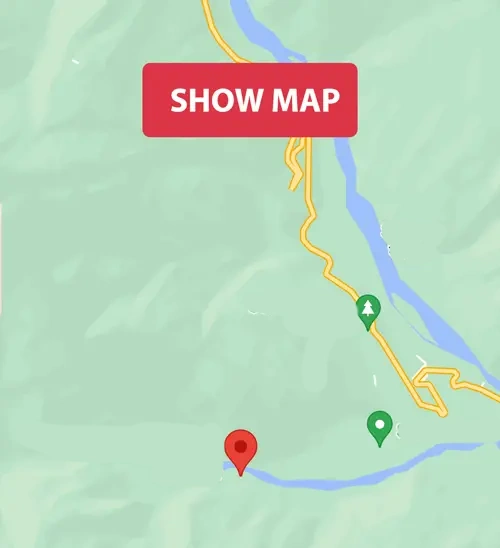
What is the meaning of Ahobilam?
The name Ahobilam means 'What great strength!' This is how Devas exclaimed when they saw Lord Narasimha.
Why did Lord Narasimha choose Ahobilam as His abode?
It is at Ahobilam that Lord Narasimha vanquished Hiranyakashipu. After that, Prahlada prayed to the Lord to make the place his abode.
Quiz
How many Narasimha temples is Ahobilam famous for?Recommended for you
Hanumanji kills a son of Ravana
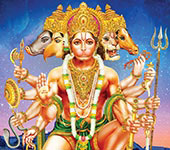 Click here to know more..
Click here to know more..
Shankaranarayana Mantra
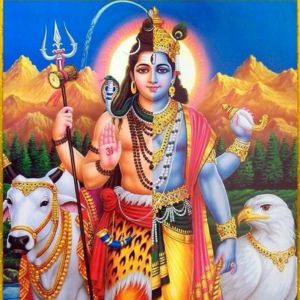
om hri'm shivanaaraayanaaya namah'....
Click here to know more..Shabari Gireesha Ashtakam
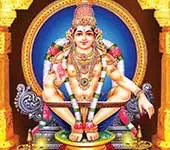
shabarigiripate bhootanaatha te jayatu mangalam manjulam mahah'. mama hri'disthitam dhvaantaram tava naashayadvidam skandasodara. kaantagiripate kaami....
Click here to know more..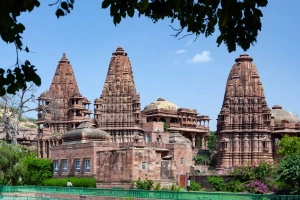
English Topics
Temples
Click on any topic to open
- 71 Ahobilam - Lord Narasimha's Sacred Abode
- 70 Malaikottai Temple, Trichy - Discover Spiritual Bliss
- 69 Jambukeswarar Temple, Trichy
- 68 Vaitheeswaran Koil - A Healing Pilgrimage
- 67 Dwaraka and Somnath
- 66 Khidkali Mahadev Mandir
- 65 Pongu Sani Temple, Thirukollikadu
- 64 The Unique And Fascinating Jharni Narasimhaswamy Temple, Bidar
- 63 Yamunotri: A Spiritual Haven in the Himalayas
- 62 Anantha Padmanabha Swamy Temple - Fascinating Legends
Please wait while the audio list loads..
30
Ganapathy
Shiva
Hanuman
Devi
Vishnu Sahasranama
Mahabharatam
Practical Wisdom
Yoga Vasishta
Vedas
Rituals
Rare Topics
Devi Mahatmyam
Glory of Venkatesha
Shani Mahatmya
Story of Sri Yantra
Rudram Explained
Atharva Sheersha
Sri Suktam
Kathopanishad
Ramayana
Mystique
Mantra Shastra
Bharat Matha
Bhagavatam
Astrology
Temples
Spiritual books
Purana Stories
Festivals
Sages and Saints
